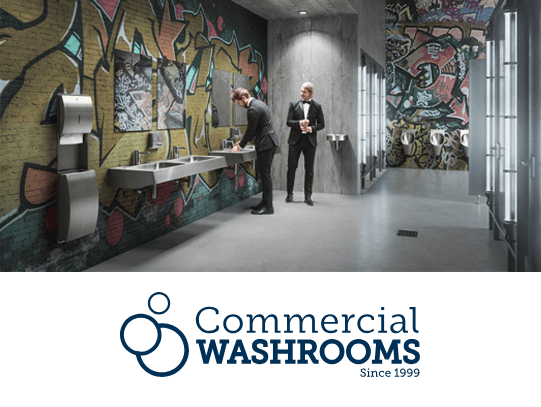Shopping Cart Abandonment Statistics In 2024
The Surprising Reasons Why Customers Abandon Their Shopping Cart - And What To Do About It
Businesses spend time, money, and effort creating a seamless browsing experience for users on their websites. Yet when it comes to checkout, a series of factors prevent the sale from happening. Shopping cart abandonment is a major obstacle for businesses, especially when most causes are preventable. Currently, the average abandoned cart percentage is over 67.91%.
The reasons why customers abandon their shopping carts range from poor user experience to account creation. Since 98% of people who visit your website don’t make a purchase, retaining the remaining 2% interest is critical for success. By understanding why clients leave before they buy, you can make smart retargeting decisions to regain their business and encourage them to change their minds.
Top 10 Shopping Cart Abandonment Stats
- Customers abandon $4.6 trillion in merchandise from their carts annually.
- Difficult checkout navigation prevents 24% of shoppers from purchasing a product.
- 91% of customers will leave a site at checkout.
- Only 34% of shoppers don't gh through with a sale because they aren't ready.
- 27% of users claim that a bad return or delivery ppolicy discourages them from buying.
- Optimizing the checkout process recovers $260 billion in potential sales.
- Sending abandoned cart emails generates 28% of eCommerce revenue.
- 56% of users open a recovery email from non-profit organizations.
- The average retargeting add gets 10x more clicks than a display ad.
- Retargeting ads are 76% more likely to receive interaction from users than standard ads (Source for all stats: 99Firms).
What Do You Want To Know?
General Overview
Checkout Abandonment Statistics & Figures
Key Statistics
- The average abandoned cart percentage for all industries is 69.57%
- A small percentage of site visits lead to a sale, at an average of 86%
- Mobile users have the highest shopping cart abandonment rates at 85.65%
- Most users between 18 – 65 years of age report abandoning an e-shopping cart at least once.
- The travel industry has the highest checkout abandonment rates online.
- Every year, businesses lose $4.6 trillion in potential merchandise revenue upon checkout.
- Companies can optimise their checkout process can increase conversions by 35.62%
- Clothes are the #1 products that customers abandon from their virtual carts.
- Most abandonments happen between 8 pm & 9 pm.
- Retargeting ads are 76% more likely to receive interaction from users than standard ads (Source for all stats: 99Firms).
- Regions with the highest abandonment rates are Asia and the Pacific Islands.
Most customers who reach the checkout phase of the online sales funnel don’t make a purchase. The abandonment rate ranges from 60 – 80%. Retargeting these customers through the use of advertising and email increases the likelihood that they will return.
A small percentage of site visits lead to a sale, at an average of 2.86%
The vast majority of people who visit your site do not end up converting to paid customers. Out of every 100 people who visit your website, only 2 – 3 of them will make a purchase.
Since the percentage is already small, retaining customers who complete most of the process and make it to checkout is essential.
Mobile users have the highest shopping cart abandonment rates at 85.65%
Although most users use their smartphones for everything from ordering food to making payments, navigating checkout is still a hassle. Most users prefer shopping on other devices that are easier to input information from, such as a laptop.
This high rate is most likely due to poor web design. It is easier to view products, navigate the site, and type in payment and shipping information on a larger device.
Most users between 18 – 65 years of age report abandoning an e-shopping cart at least once.
Despite the best efforts of marketers and web developers, cart abandonment remains a common occurrence. Most people who had the intention of making a purchase online have changed their minds at least once.
Understanding why people leave and creating solutions for these problems reduces the likelihood that your customers will go elsewhere.
The travel industry has the highest checkout abandonment rates online.
Stats show that the travel industry has high checkout abandonment rates across all services. Other industries with similar rates include finance and non-profits, both at 83%. The retail and fashion industries come in at a close third, with a 74.2% abandonment rate.
Every year, businesses lose $4.6 trillion in potential merchandise revenue upon checkout.
Every year, businesses lose over $4.6 trillion in potential sales due to issues that customers face in the checkout process (Source: Business Insider). This number has the potential to change with the retargeting process.
Companies can recover $260 billion in sales if they optimize the checkout process.
When companies make an effort to refine the checkout process, it makes a positive impact on their bottom line. The modern customer expects a seamless and smooth navigation process on your website.
If they have to strain to get the information they need, your customers will abandon the process altogether. Taking the take to make these changes improves your conversion rate by over 35%.
Clothes are the #1 products that customers abandon from their virtual carts.
The retail and shopping industry generates billions in annual revenue. Although clothing items sell the most, they are also the #1 product that customers are likely to abandon from their shopping carts.
There are different reasons why this is so, ranging from competitors, lack of payment options, and extended shipping times. Other products abandoned the most in the checkout process include tech, homeware, jewelry, and food items.
Most abandonments happen between 8 and 9 pm.
Many people shop when they settle in after work and after dinner. That habit probably reflects the peak cart abandonment occurrence between 8 and 9 pm (Source: Eye Studios).
The shopping habits of customers vary depending on the time of day and whether it is a weekend or weekday. Thursdays and weekends have high rates of shopping cart abandonment.
Regions with the highest abandonment rates are Asia and the Pacific Islands.
APAC countries have the highest abandonment rates of all global shoppers. The reasons for this rate range from long shipping times to additional expenses and limited online payment options.
The second-highest region is the Middle East at 76.1% and Latin America at a close third with a 75.3% rate. However, North America is not significantly lower, with an average abandoned cart percentage of 74% (Source: Donkey).
Cart Abandonment Psychology
Reason Why Customers Abandon Their Shopping Carts
Key Statistics
- A load time of more than 3 seconds causes 57% of customers to leave the checkout page.
- Difficulty navigating a website or checkout process causes 24% of shoppers to leave the site before buying.
- Lack of preparedness to buy is the reason why 34% of potential customers abandon their shopping cart.
- Hidden/additional costs that show up during checkout cause 23% of shoppers to cancel their purchase.
- Poor service experience causes 78% of online shoppers to abandon their cart.
- Businesses that require users to create accounts before buying lose 34% of customers at checkout.
- Security concerns result in 17% of online shoppers canceling their purchases.
- The inability to enter personal information with ease causes 39% of mobile users to abandon their shopping cart.
- Rigid return policies and slow shipping times cause 27% of users to cancel their purchase.
- Lack of variety in payment options or a card decline causes 10% of potential customers to leave their carts.
- Incorrect discount codes cause 46% of shoppers to abandon their cart during the e-checkout process.
- Re-entering information such as credit card details causes 55% of users to reconsider purchasing.
Customers nowadays visit a multitude of sites consistently and have exposure to some of the best websites in the world. Depending on the corporation or business, thousands and even millions of dollars go into creating user-friendly websites.
The reasons for abandoning shopping carts are diverse, but most are preventable and are not difficult to tweak or upgrade. Below are the most common reasons why users don’t make a purchase and leave their shopping carts online.
Difficulty navigating a website or checkout process causes 24% of shoppers to leave the site before buying.
Navigating the checkout segment of your website must be easy for your users. Aim to have your users take no more than three actions before they enter their information. These actions are selecting the item, adding it to their cart, and checking out. Additional steps are unnecessary and could cause frustration and, eventually, cart abandonment.A load time of more than 3 seconds causes 57% of customers to leave the checkout page.
Today’s online user is tech-savvy and impatient. Slow loading times account for high bounce rates on all website pages. Waiting more than 3 seconds for the checkout page to load causes your customers to look elsewhere. It discourages your customers from going through with the payment process.Lack of preparedness to buy is the reason why 34% of potential customers abandon their shopping cart.
You may be doing everything right and have all the necessary steps in place to create a seamless experience for your customers. However, optimization doesn’t prevent 34% of potential customers from leaving their cart, simply because they did not prepare or intend to purchase. Some customers use the shopping cart to compare pricing options, while others check out a product online but buy it in-store.Hidden/additional costs that show up during checkout cause 23% of shoppers to cancel their purchase.
Hidden expenses and overwhelming extra costs that only show up at the checkout process frustrate customers and cause you to lose business, fast. Customers appreciate honest business practices and knowing what they will be paying for upfront. Transparent business practices and keeping prices and surcharges clear and visible improve your bottom line.Poor service experience causes 78% of online shoppers to abandon their cart.
Users behave similarly online as they do in brick-and-mortar stores. If customers have a poor experience with customer service, they become frustrated and opt to leave. Ensuring that the customer is happy and has a positive service experience can make a significant positive change in user behavior at checkout.Rigid return policies and slow shipping times cause 27% of users to cancel their purchase.
Since more people are using the web to make purchases, sellers who offer fast and reasonable shipping and return policies get more business. As a customer, shorter wait times for a product to arrive are more convenient and desirable. If the return policy is hassle-free and does not require too many actions, their experience is more pleasant.The inability to enter personal information with ease causes 39% of mobile users to abandon their shopping cart.
You can work with your web developer to ensure that the checkout fields and layout of your website are easy to use. The easier it is to input information, the less likely that you will lose customers right before they make a payment.Security concerns result in 17% of online shoppers canceling their purchases.
Customers worry about their security more than ever nowadays. With increasing instances of identity theft, your clients expect a secure payment portal and browsing experience. If the website does not seem safe, you will lose a significant number of potential customers.Businesses that require users to create accounts before buying lose 34% of customers at checkout.
Although most businesses would like their customers to create accounts, some customers prefer a quick shopping experience or only intend to make a one-time purchase. Since 35% of potential customers abandon their shopping carts due to registration requirements, consider creating a guest checkout option to improve sales.Rigid return policies and slow shipping times cause 27% of users to cancel their purchase.
Since more people are using the web to make purchases, sellers who offer fast and reasonable shipping and return policies get more business. As a customer, shorter wait times for a product to arrive are more convenient and desirable. If the return policy is hassle-free and does not require too many actions, their experience is more pleasant.Lack of variety in payment options or a card decline causes 10% of potential customers to leave their carts.
Your checkout options should include different payment portals. Only accepting credit or debit cards, for example, and not offering other options like PayPal, cause 10% of your customers to look elsewhere.Incorrect discount codes cause 46% of shoppers to abandon their cart during the e-checkout process.
Discount codes create an incentive for customers to shop, especially when the price of the product or service is high. When that code doesn’t work, it causes frustration, and your customers will not complete the purchase.Re-entering information such as credit card details causes 55% of users to reconsider purchasing.
Most users want to act once to reach their final goal of making a purchase. If your customers have to input their information twice to make a single purchase, they will most likely not go through with the sale.Solutions to Decrease Cart Abandonment on Checkout
Even if your customers are leaving at checkout, you can still take steps to regain their interest. You can re-expose them to the product or service they were interested in purchasing. Retargeting happens with advertisements and email campaigns, which have a high success rate and are a sound investment to make.
Email Marketing
Abandoned Cart Email Statistics
Key Statistics
- Abandoned cart emails that successfully attract customers are the cause of 3% of annual eCommerce sales.
- Sending abandoned cart emails leads to a 64% conversion rate.
- Non-profit organizations report that their retargeting emails have an open rate of 84%.
- Over 40% of customers click on emails that retarget them after abandoning their shopping cart.
- Conversion rates for the retail and fashion industry’s retargeting emails are highest in May.
Abandoned cart emails that successfully attract customers are the cause of 28.3% of annual e-commerce sales.
Even when your customers leave your site, retargeting emails successfully re-generate interest in the product. These customers account for 28.3% of annual sales and make a positive impact on your bottom line.Sending abandoned cart emails leads to a 4.64% conversion rate.
Abandoned cart emails increase your conversion rate by 4.6%, and are a solid strategy to use that are non-intrusive and cause users to take action.Non-profit organizations report that their retargeting emails have an open rate of 56.84%
Since non-profit organizations often work toward benevolent causes and raising funds for them, people are more likely to open emails that these organizations send.Over 40% of customers click on emails that retarget them after abandoning their shopping cart.
When the customer expresses an interest in buying a product, they are likelier to open an email that reminds them about the product. These emails are a chance for the business to use various methods to get them back to your site. Examples include promo codes, additional offers, free shipping, or a gift.Conversion rates for the retail and fashion industry’s retargeting emails are highest in May.
The month of May is the best time to send retargeting emails to customers who express interest in retail and fashion items. During this time, people are outdoors more often and perform various activities that require different clothing options.Customer Retargeting
Shopping Cart Abandonment Retargeting Statistics
Key Statistics
- Retargeting ads are 70% likelier to receive clicks than standard ads.
- Retargeting ads receive 10x more clicks than regular ads.
- Personalized ads receive 3x more interest than generic ads.
- The best places to retarget your customers are Facebook and Google Display Network.
- According to 72% of millennials, retargeting ads re-capture their interest in a product.
- Over 30% of customers have positive or very positive feelings when seeing retargeting ads.
Retargeting ads are 70% likelier to receive clicks than standard ads.
Standard ads may be a nuisance for some customers. Retargeting ads, on the other hand, are less likely to be intrusive and garner more clicks. A whopping 70% of users who see an advertisement for an item they were about to purchase will click on it.Retargeting ads receive 10x more clicks than regular ads.
A strategy that uses retargeting ads will have 10x more impact on your customers than a standard ad.Personalized ads receive 3x more interest than generic ads.
Personalization is the best way to attract a user. Once the customer feels as if the ad or strategy is close to their preferences and choices, they will be more responsive to them.The best places to retarget your customers are Facebook and Google Display Network.
Facebook and Google Display Network consistently rank highest as being the best places to retarget customers. These platforms spend a significant amount of resources perfecting their strategy and are user-friendly with reliable results.According to 72% of millennials, retargeting ads re-capture their interest in a product.
Businesses covet the millennial category, who often make smart purchase decisions and have a higher degree of involvement in the sales process. The majority of millennials who see retargeting ads are enthusiastic about them.Over 30% of customers have positive or very positive feelings when seeing retargeting ads.
Contrary to popular belief, some customers appreciate seeing retargeting ads. The advertiseConclusion: Fine-Tune Your Retargeting Strategy
Despite your best efforts, not all customers will go through the sales funnel and become paying clients. However, there are ways to increase conversions and the likelihood that your customers will make the purchase.
Fine-tune your retargeting strategy by applying the below tips:
- Create secure websites and checkout options to increase trust in your brand.
- Make sure your website loads in less than 3 seconds.
- Don’t make your return policy difficult.
- Try to secure fast and hassle-free shipping.
- Never hide costs from clients and make sure all charges are clear and visible.
- Don’t force users to create an account and create a guest checkout option.
- Insist on a user-friendly website and clear navigation options.
- Do not limit your customers to one payment option.
By optimizing your checkout process and adopting a retargeting strategy, your customers will think twice before abandoning their shopping cart.
Our Recent Blog Posts
Accelerate Your Shopify Store Performance Immediately
Shopify Performance Optimisation: Explore the underlying causes of your store’s slow performance and find solutions to fix these...
Read the full blogHow to Do SEO on Shopify: 10 Top Tips to Boost Your Rankings
How to Do SEO on Shopify: 10 Top Tips to Boost Your Rankings. Home SEO is a critical...
Read the full blogWhat Is Headless
What is a Headless Website: Explained by Experts. Keeping your Magento store up-to-date is essential for ensuring optimal...
Read the full blog






